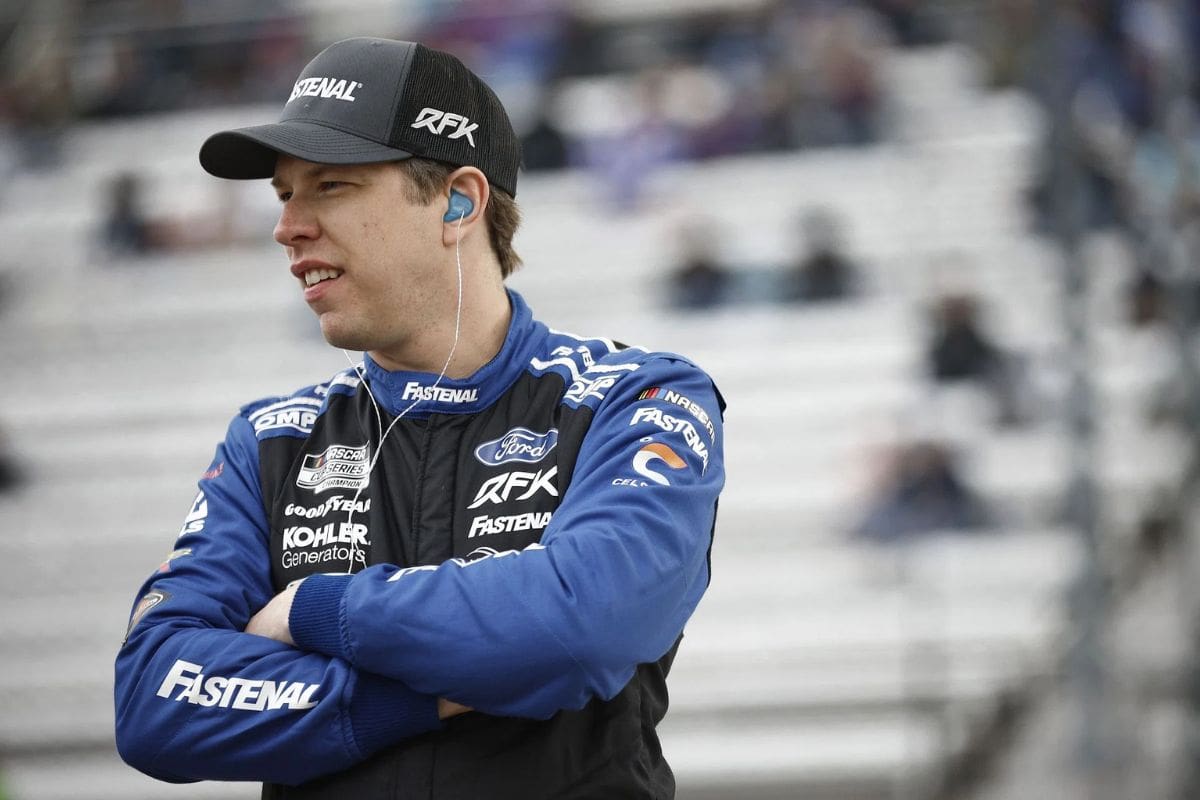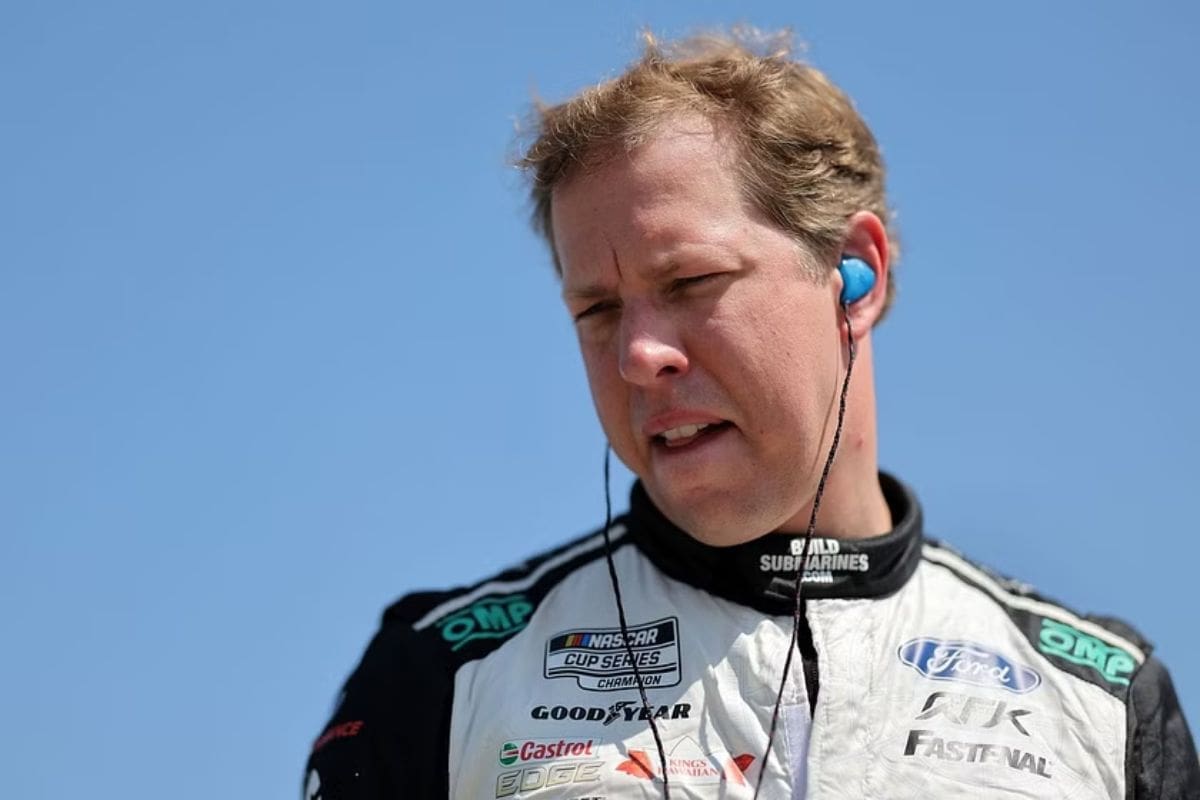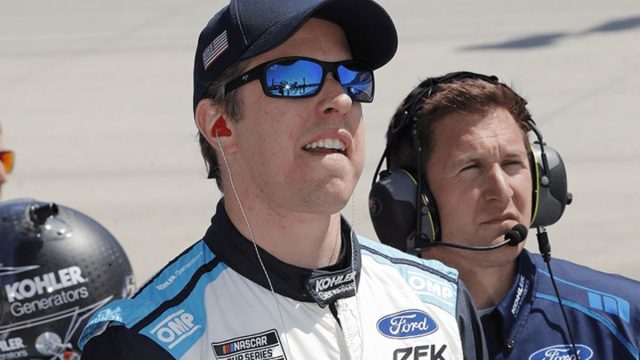Brad Keselowski Teases New Manufacturer Arrival: Brad Keselowski has ignited significant intrigue within the NASCAR community, indicating a new manufacturer may soon enter the competitive fold. His insights, especially on engine tests, highlight the importance of technological innovation and the strategic allure for new Original Equipment Manufacturers (OEMs). This potential entry marks a crucial moment for NASCAR, aiming to enrich the sport’s diversity and competitive balance. Recent developments suggest Honda could be the new arrival, with a projected timeline emphasizing a thorough preparation phase followed by development, testing, and regulatory approval, aiming for a 2026 debut. This exciting prospect promises to reshape NASCAR’s dynamics, revealing a future of heightened competition and innovation.
Key Takeaways
- Brad Keselowski provided insights into engine tests aimed at attracting new manufacturers to NASCAR.
- Engine tests are crucial for innovation and appealing to potential new Original Equipment Manufacturers (OEMs).
- Keselowski’s insights highlight the importance of data in attracting new manufacturers to the sport.
- The discussions hint at Honda’s potential entry, reshaping NASCAR’s competitive landscape by 2026.
- Keselowski’s comments underline NASCAR’s commitment to diversification and technological advancement.
NASCAR’s Preparation for New Manufacturer
As anticipation mounts over the arrival of a new manufacturer in NASCAR, the organization is diligently making strategic adjustments to guarantee a seamless integration that upholds competitive balance across all teams. The buzz surrounding the potential entry of a new Original Equipment Manufacturer (OEM) into the sport has set the stage for a series of proactive measures aimed at ensuring that the introduction does not disrupt the equilibrium of competition that NASCAR prides itself on.
Central to NASCAR’s preparatory efforts is the focus on parity in resources and power among all competing teams. This initiative is not merely about maintaining a level playing field; it’s about reinforcing the integrity of the sport by ensuring that no single team, or manufacturer, gains an undue advantage. NASCAR officials are deep in the process of laying the groundwork for the necessary adjustments that will accommodate the new entry, meticulously analyzing the implications of this addition on the sport’s competitive dynamics.
The strategic adjustments encompass a broad spectrum of considerations, from technical specifications to resource allocation policies. By doing so, NASCAR aims to integrate the new manufacturer in a manner that enhances the sport’s appeal and competitiveness, without compromising the standards of performance and fairness that have long defined NASCAR racing.
This forward-looking approach highlights NASCAR’s commitment to evolution and innovation, while steadfastly preserving the core values that have made the sport a beloved spectacle. The anticipation of a new manufacturer is not just about welcoming a new competitor; it’s about embracing the future of NASCAR with open arms and a strategic mindset, ensuring the sport continues to thrive and captivate audiences around the world.

Next-Gen Car Test at Richmond
At the Richmond Raceway, Martin Truex Jr.’s vehicle became the focal point of a groundbreaking test on the Next-Gen car, featuring the introduction of an axle torque sensor for the first time in NASCAR’s history. This significant innovation not only signals a leap forward in the technological evolution of stock car racing but also opens up new dimensions in the analysis and understanding of vehicle performance under race conditions.
The inclusion of an axle torque sensor in the Next0-Gen car’s arsenal of technology represents a strategic move by NASCAR to enhance the precision of performance metrics. This sensor measures the amount of torque being applied to the car’s axle, a critical factor in understanding how power is transferred from the engine to the wheels. Such data is invaluable, providing teams and engineers with insights that can lead to optimizations in car setup, driving strategies, and ultimately, race performance.
This test at Richmond is not an isolated endeavor but part of NASCAR’s broader commitment to adopting cutting-edge technologies that elevate the sport’s competitiveness and appeal. By integrating such sophisticated measurement tools, NASCAR is ensuring that the Next-Gen car remains at the forefront of racing innovation, offering a more dynamic and engaging experience for teams, drivers, and fans.
Furthermore, this initiative reflects NASCAR’s proactive approach to addressing the demands of an evolving sporting landscape, where data and analytics play a crucial role in shaping outcomes. As the sport continues to evolve, the introduction of technologies like the axle torque sensor marks a significant milestone in NASCAR’s journey towards a more technologically advanced future.
Martin Truex Jr. has an axle torque sensor for Richmond (a first). It wants to gather engine/power data to help with engine development. But could it be used to balance power for manufacturers with different engine architecture? Thoughts of Brad Keselowski: pic.twitter.com/ACA9ZWZB1N
— Bob Pockrass (@bobpockrass) March 31, 2024
Brad Keselowski’s Insights on Engine Test
Building on the innovative advancements in NASCAR’s technology, Brad Keselowski provides valuable insights into the engine test, focusing on its significant role in shaping the future of the sport by attracting new manufacturers. Keselowski, a seasoned driver with a deep understanding of the mechanics behind racing, sheds light on how these engine tests are not just about refining the current capabilities of NASCAR vehicles but are crucial in laying down the groundwork for a more inclusive and competitive environment.
The emphasis on data from these tests speaks volumes about NASCAR’s forward-thinking approach. By meticulously analyzing the performance, power levels, and efficiencies of engines under various conditions, NASCAR can offer a compelling case for new Original Equipment Manufacturers (OEMs) to join NASCAR. Keselowski points out that the insights gained are instrumental in enhancing power outputs while simultaneously working towards reducing development costs—an attractive proposition for any manufacturer considering entry into the sport.
Moreover, Keselowski’s commentary highlights the symbiotic relationship between technological advancement and the sport’s appeal to a broader spectrum of manufacturers. His perspective shows the strategic importance of these engine tests beyond the immediate technical benefits, emphasizing their role in signaling NASCAR’s readiness to embrace innovation and diversification.
In essence, Keselowski’s insights not only emphasize the technical significance of the engine tests but also reflect on their broader impact on NASCAR’s evolution. Through a lens of expertise and experience, he portrays these tests as a critical step towards a more dynamic, competitive, and technologically advanced future for NASCAR, inviting new players to contribute to the sport’s rich legacy.
“I understand the initiative and why it’s being attempted for cost-cutting measures, which eventually could lead to more OEM entries. Which potentially could lead to a larger investment in the sport that grows the sport for all its fans,”
“I think primarily you can use that data to even out the power levels of the car across the manufacturers and a lot of different engine architectures to be used in the sport, which is a big deal, and then potentially to cut some development costs and, to a point, add some mileage.” – (Keselowski)

Signs Pointing to Honda’s Entry
Recent developments within NASCAR’s testing and planning spheres strongly hint at Honda’s imminent onset into the sport, a move emphasized by Brad Keselowski’s pertinent observations. The motorsports arena has been stunned with speculation, but recent activities suggest that these are not mere rumors. NASCAR’s preparatory steps have begun painting a clear picture, with Honda being the protagonist in this unfolding narrative. Keselowski, a seasoned voice in the racing community, has not only observed these changes but has also highlighted their potential to reshape NASCAR’s competitive landscape.
The involvement of a new Original Equipment Manufacturer (OEM) in NASCAR is a significant event, altering dynamics, strategies, and possibly even fan allegiances. Honda’s entry, as suggested by the current signs, could introduce fresh engineering perspectives, reviving the sport’s technological frontiers. The anticipation stems not only from Honda’s reputable prowess in automotive innovation but also from the strategic implications for teams and sponsors. Keselowski’s comments add a layer of authenticity to the speculation, emphasizing the depth of the shift NASCAR might be on the cusp of experiencing.
Moreover, the implicit acknowledgment through NASCAR’s testing and planning activities offers a glimpse into the organization’s vision for a diversified and revived competitive field. This move towards inclusion of a new OEM, with Honda being a prime candidate, highlights a forward-thinking approach aimed at enriching the sport’s appeal and sustainability. Keselowski’s insights, therefore, do not merely reflect on a potential change but signal the beginning of a new chapter in NASCAR’s storied existence.
Timeline for Honda’s Potential Entry
NASCAR’s roadmap for welcoming a new Original Equipment Manufacturer, potentially identified as Honda, crystallizes with a projected entry timeline set around 2026, as indicated by John Probst, the chief racing development officer. The sport’s strategic positioning and infrastructure adjustments suggest a meticulously planned integration, aiming to guarantee a smooth changeover and competitive parity among manufacturers. The anticipation of Honda’s entry into NASCAR not only signifies a monumental shift in the racing landscape but also aligns with NASCAR’s broader vision of diversification and innovation. Here’s a closer look at the key aspects of the timeline:
- Preparation Phase (2023-2024): Early discussions, feasibility studies, and strategic planning sessions. This phase focuses on aligning Honda’s technical capabilities with NASCAR’s specifications, including safety standards, performance metrics, and sustainability goals.
- Development and Testing (2025): Prototyping and rigorous testing of Honda’s NASCAR vehicle. This critical phase allows for adjustments based on performance feedback, ensuring that Honda’s entry is competitive and adheres to NASCAR’s strict regulations.
- Regulatory Approval and Team Partnerships (2025-2026): Finalizing regulatory approvals and establishing key team partnerships. This period involves close collaboration with NASCAR to guarantee compliance and integration into the sport, alongside negotiations with racing teams to secure a strong debut lineup.
- Official Entry and First Season (2026): Honda’s debut race and inaugural season. Marking the result of years of preparation, Honda’s entry into NASCAR would be celebrated as a landmark moment, potentially reshaping the competitive dynamics and fan engagement in the sport.
This timeline highlights the intricate planning and collaboration required to integrate a new manufacturer like Honda into NASCAR’s ecosystem, promising an exciting future for the sport.
“A timeline for a new OEM coming into our sport is somewhere in the 18–24 month period. When we work with our existing partners, it is important for us to make sure the new partner coming in would be a complement… We are within a few months of us getting to the point where you almost start running out of time to go through the steps that we have today. If all stars align, it is possible you could do it quicker than 18 months,” – (Probst)

News in Brief
The excitement surrounding the potential arrival of a new manufacturer in NASCAR, hinted by Brad Keselowski and emphasized by the testing of Next Gen cars, especially at Richmond, reflects a significant evolution in the sport.
The insights on engine tests and the indications pointing towards Honda’s entry suggest a strategic expansion of NASCAR’s competitive landscape.
The timeline for Honda’s potential entry is eagerly anticipated, marking a crucial moment in NASCAR’s history that promises to enhance the diversity and dynamism of the racing series.
Our Reader’s Queries
Q: What company does Brad Keselowski own?
A: Brad Keselowski is the owner and founder of Keselowski Advanced Manufacturing, headquartered in Statesville, North Carolina. The company specializes in additive metal technologies and CNC machining.
Q: What did Brad Keselowski do?
A: Keselowski, the 2012 Cup champion, boasts 35 NASCAR premier series victories, triumphing in prestigious races like the Coca-Cola 600, Brickyard 400, and Southern 500. Additionally, he clinched the 2010 Xfinity Series title, tallying 39 wins in that series.
Q: Who is Brad Keselowski sponsored by?
A: Consumer Cellular sponsors Brad Keselowski in multiple 2024 races, with Keselowski boasting two wins and 34 top-10 finishes in 76 starts at the four tracks where the Consumer Cellular Ford will appear this season. Image from RFK Racing.
Also Read: Brad Keselowski Discloses RFK Racing’s IMSA Plans: Shocking Move!
